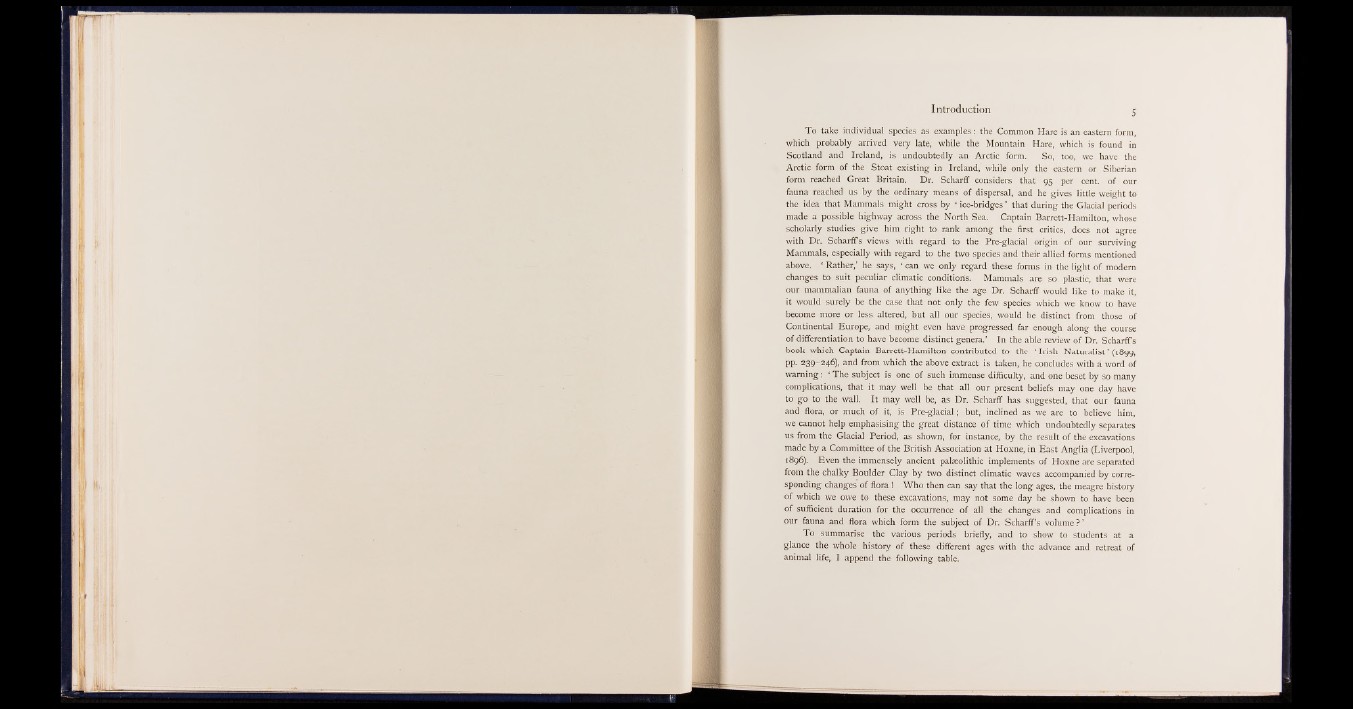
To take individual species as examples: the Common Hare is an eastern form,
which probably arrived very late, while the Mountain Hare, which is found in
Scotland and Ireland, is undoubtedly an Arctic form. So, too, we have the
Arctic form of the Stoat existing in Ireland, while only the eastern or Siberian
form reached Great Britain. Dr. Scharff considers that 95 per cent, of our
fauna reached us by the ordinary means of dispersal, and he gives little weight to
the idea that Mammals might cross by ‘ ice-bridges ’ that during the Glacial periods
made a possible highway across the North Sea. Captain Barrett-Hamilton, whose
scholarly studies give him right to rank among the first critics, does not agree
with Dr. Scharffs views with regard to the Pre-glacial origin of our surviving
Mammals, especially with regard to the two species and their allied forms mentioned
above. ‘ Rather,’ he says, ‘ can we only regard these forms in the light of modern
changes to suit peculiar climatic condition’s. Mammals are so plastic, that were
our mammalian fauna of anything like the age Dr. Scharff would like to make it,
it would surely be the case that not only the few species which we know to have
become more or less altered, but all our species, would be distinct from those of
Continental Europe, and might even have progressed far enough along the course
of differentiation to have become distinct genera.’ In the able review of Dr. Scharff s
book which Captain Barrett-Hamilton contributed to ttre ‘ Irish Naturalist'(1899,
pp. 239-246), and from which the above extract is taken, he concludes with a word of
warning: ‘ The subject is one of such immense difficulty, and one beset by so many
complications, that it may well be that all our present beliefs may one day have
to go to the wall. It may well be, as Dr. Scharff has suggested, that our fauna
and flora, or much of it, is Pre-glacial; but, inclined as we are to believe him,
we cannot help emphasising the great distance of time which undoubtedly separates
us from the Glacial Period, as shown, for instance, by the result of the excavations
made by a Committee of the British Association at Hoxne, in East Anglia (Liverpool,
1896). Even the immensely ancient palaeolithic implements of Hoxne are separated
from the chalky Boulder Clay by two distinct climatic waves accompanied by corresponding
changes of flora I Who then can say that the long ages, the meagre history
of which we owe to these excavations, may not some day be shown to have been
of sufficient duration for the occurrence of all the changes and complications in
our fauna and flora which form the subject of Dr. Scharff’s volume?’
To summarise the various periods briefly, and to show to students at a
glance the whole history of these different ages with the advance and retreat of
animal life, I append the following table.